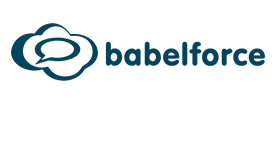We’re in a moment of AI acceptance. 86% of the public will use AI or other self-service automation where it’s offered. What people really care about is getting reliable service in good time. If you can offer prompt results, it doesn’t really matter how you do it.
If you are sceptical about certain AI claims, that’s good. You should be sceptical – the CX tech space is full of exaggeration right now.
But it’s also true that AI tools, like VoiceBots, are already helping CX leaders to balance cost, capacity, and the quality of their service delivery.
There are at least 5 signs which indicate when a business should incorporate VoiceBot AI into its mix. If you recognise yourself in even one of these problems, it’s time to seriously consider bringing VoiceBot AI into your contact centre.
First – What Is a VoiceBot?
So we’re on the same page: a VoiceBot is an automated system that can “talk” and “listen” to customers. Usually, these systems replace or supplement traditional IVR systems.
In the majority of uses, VoiceBots are *not* generative AI – meaning they respond intelligently to input, but they can’t “make stuff up” like ChatGPT.
You Might Need a VoiceBot If…
1. You Have Trouble Routing Calls First Time
Do you want to destroy customer trust? Then keep misrouting calls. It’s pretty strange to me that customer service teams obsess over limiting a customer’s time waiting in a queue – but then route that customer to the wrong agent.
The problem is button prompts and DTMF, which are very blunt tools to get meaningful information from a caller (and which often fail).
Deploying a VoiceBot with a strong focus on call routing is compelling for two reasons.
- It’s a more intuitive experience for the customer. Why ask a customer what department they need to speak to? They don’t know. They just know what their problem is. It’s your job to figure out where to send them.
- You can get a lot more granular with routing options. I have spoken to some call centres that base the structure of their teams on how many options fit in an IVR. That’s nuts. With the VoiceBot approach, it’s far better to design your ideal team structure first – and then to build the routing to match.
2. Your Agents Go Into Calls Blind
Context is king in customer service. It turns out that more than half of failed FCRs are due to an agent’s inability to access the right information – and that is not too surprising to me.
All that data which you’re capturing to improve call routing can also be made visible to agents. This is generally delivered as a transcript, useful when a customer gives your VoiceBot a complex request.
Take a challenging example. A customer might say: “I placed an order, but I want to upgrade it, and I’m moving house, and I also need to change my payment card.” How are you going to manage that with an IVR? You’re not.
Whereas a VoiceBot can process the query and hand over to an agent with the full context in place.
3. You Have a Lot of Calls About the Same Issues
“Where is my package?” “What is my account balance?” “Is my flight delayed?” When I sit in with call centres, these are the kinds of queries I hear all day.
Call centre work is hyper-repetitive. In a typical business, 75% of total volume is about the same 6 queries. When the Fintech company Klarna says they have an AI assistant doing the work of 700 agents, that’s the kind of work they mean.
Their AI agent is not handling complex or sensitive topics: it’s doing the kind of thing self-service tools have always enabled.
Let’s take the first example, “where is my package?”
You know, and I know, that the ideal customer finds this out by checking their email. That level of query should not come anywhere near the call centre.
But sometimes they do. That’s what makes the addition of a VoiceBot so intriguing – it’s another line of self-service that deflects calls from agents, while still giving customers great outcomes.
4. People Are “Hating” on Your IVR
So far I’ve talked about pull factors – the things that make Voicebots attractive.
Now let’s think about a push factor. Traditional IVRs are the most lampooned part of modern call centre service. Sure, they represent a step up from what came before – enormous queues – but customers don’t think about it that way.
63% of consumers say they hate using an IVR because it makes them listen to irrelevant options. 65% say the reason for the call isn’t listed at all.
Both of those tally with my experience. But neither of them are a problem for businesses that are already using a VoiceBot.
People know how to use a contact centre’s VoiceBot because they know how to use an Amazon Alexa. The degree of general exposure to voice assistants makes this pretty much a no-brainer.
5. Your Calls Are Too Long
I would never recommend getting too focused on AHT – it can become an unhealthy obsession! In a lot of cases limiting call length is a poor strategy, especially when you do it by putting time pressure on agents.
However – when you really dig into the breakdown of a typical call, you’ll see a lot of wasted time. By “wasted” I mean agents performing tasks which are easily automated.
For example: Why, in 2024, are so many agents still manually looking up customers in their CRM?
In the majority of VoiceBot deployments I see, it’s not the small group of fully automated calls that really move the needle. It’s the much larger group of calls that automate, say, 15% of the total interaction.
Just automating customer ID and passing that to the agent – ideally, auto-opening the CRM profile too – is something that makes a very real impact.
In recent case studies I’ve seen, that seemingly small change takes 45 seconds off of the average call.
Conclusion

Julian Hertzog
If even one of these applies to you – routing issues, lack of context, repetition, IVR anger, or call length – you could make life simpler for yourself with VoiceBot automation.
It is already solving some of the most intractable problems with cost, capacity, and retention. And there is still time to be ahead of the curve, rather than behind it.
Written by: Julian Hertzog, Head of Sales, babelforce.
For more information about babelforce - visit the babelforce Website
Call Centre Helper is not responsible for the content of these guest blog posts. The opinions expressed in this article are those of the author, and do not necessarily reflect those of Call Centre Helper.
Author: babelforce
Published On: 28th Mar 2024 - Last modified: 6th Dec 2024
Read more about - Guest Blogs, babelforce, Julian Hertzog






 babelforce is the composable customer experience platform uniting agents and automation.
Our platform gives you the power to create the customer experiences you’ve always wanted, with tools anyone can use.
babelforce is the composable customer experience platform uniting agents and automation.
Our platform gives you the power to create the customer experiences you’ve always wanted, with tools anyone can use. 








